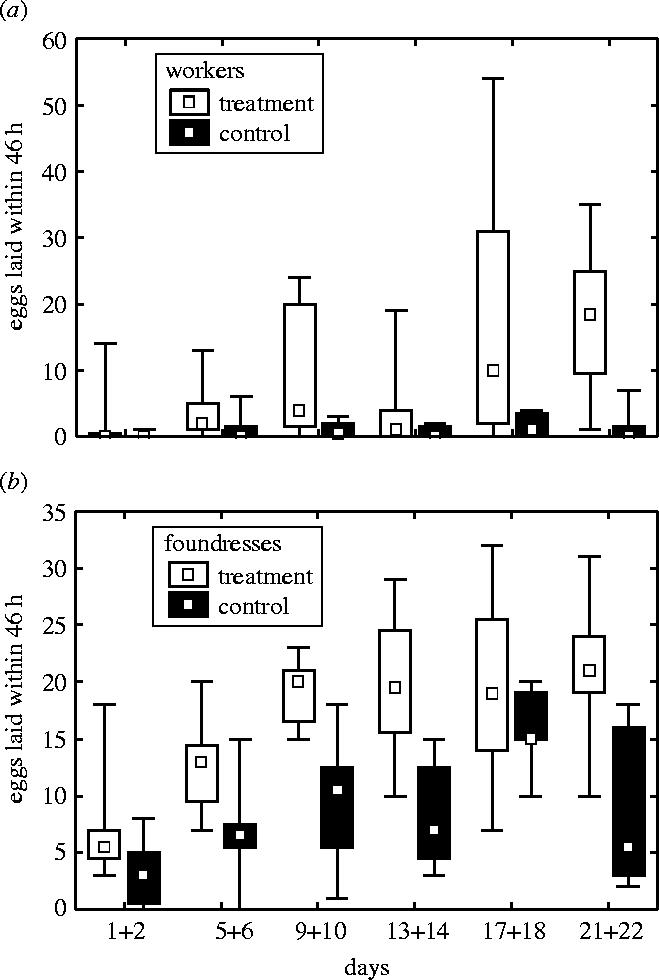Figure 1.

Pattern of egg-laying. Presented are medians, quartiles and ranges. (a) Control workers consistently laid very few eggs throughout the experiment. By contrast, workers gradually increased their egg-laying rates in treatments (Spearman rank correlation, treatment: r=0.51, p<0.01, control: r=0.26, n.s.). Control and treatment did not differ at days 1+2 (Mann–Whitney U-test, U=27.5, n.s.) but treatment laid more eggs at day 21+22 (U=3.5, p<0.005). (b) The foundress gradually increased her egg-laying rate in treatments and in controls (Spearman rank correlation, treatment: r=0.61, control: r=0.42, p<0.01 for both), but the increase was larger in treatments. After the first removal of brood (i.e. at days 1+2), treatment foundresses already tended to lay more eggs than control foundresses (Mann–Whitney U-test, U=14.5, p<0.065). This suggests that foundresses responded to brood removal very fast. The difference in egg-laying rates was significant in all following days (Mann–Whitney U-tests).
